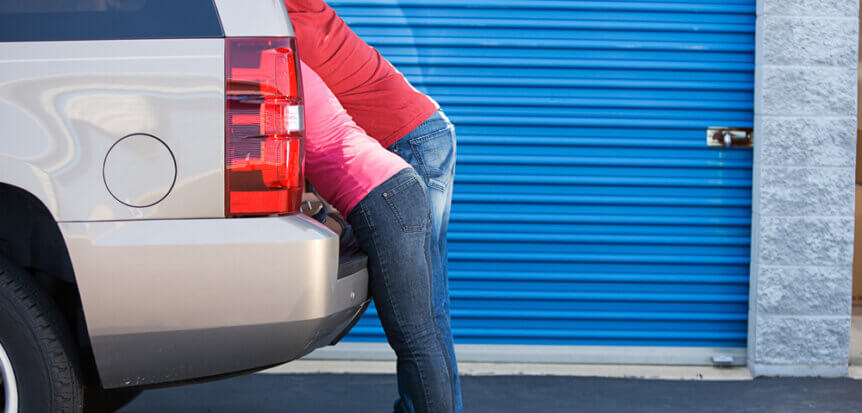There are many perks to using a self-storage unit, but it’s not uncommon for people to worry about how safe their belongings are when left in these units, especially for an extended period. While self-storage facilities will come with security measures to help give you some peace of mind, there are also steps you should take to make sure your items are safe from theft and damage. The management company may be responsible for maintaining the site, but you will be responsible for what happens to your belongings when you are using the unit. If you want some tips on how to keep your items safe from damage, here are some suggestions that you may find useful.
Inspect the Unit Before You Move Your Belongings into It
This is a sensible thing to do, as you want to make sure that you will not be blamed for any damage to the unit that was already there. Furthermore, highlighting to the management company if some potential holes or cracks could result in leaks or other damage will enable them to fix the issue before you start moving your things in. Take photographic evidence and keep this as proof you were not responsible for this damage.
Clean Your Items Before You Move Them In
By cleaning your items before you move them into your unit, you’ll be helping to keep the unit cleaner as a whole. It’s still a good idea to clean your unit by wiping down surfaces, sweeping, and occasionally mopping to avoid the build-up of grime, and letting some fresh air into your unit to get rid of any musty smells that have developed. It’ll also help to reduce any moisture in the air, which can cause mold and mildew.
Cover and Seal Your Items
If you want to protect your items from damage in storage, it’s a good idea to cover larger items of furniture with dust sheets and put other items in sealed containers. This will prevent dirt from building up on your belongings but can also act as a protective barrier if there were to be a leak in your unit.
Use Shelves and Wooden Pallets
Rather than stack your boxes and belongings on the floor, make the most of shelving units and even wooden pallets to place underneath furniture, shelves, etc. This can help them to avoid getting damaged by rising dampness or leaks if the weather has been bad or if your storage unit is in an area prone to floods. It will also stop dirt from the floor of your unit spoiling your belongings and leaving marks.
Do Not Leave Food in Your Unit
You will not be permitted to store perishable foods in your unit because this can attract pests and leave a foul smell that can impact other renters in the facility. While you may not be storing perishable foods, make sure that you’re not leaving behind any packaging or half-eaten snacks when you leave. It’s not uncommon for people to stop for lunch or a snack if they are spending hours sorting through their belongings, so remember to take everything with you when you go and put it in a bin. You should also sweep up any spills that you might have made so there are no traces of food left behind.
Don’t Use Cardboard Boxes
Hopefully, you will never have an issue with a pest infestation at your storage facility, but it could happen. If you want to take precautions and keep your belongings safe, avoid using cardboard boxes as rats and mice can chew through them. Instead, use metal or plastic containers for your items and make sure the lids are sealed properly. When it comes to furniture items, mice, rats, and even insects like to burrow into the fabrics and inside of your couches to turn into their nests. Putting a plastic wrap cover over your furniture items can prevent this from happening.
Weather-proof Your Unit
This is more relevant to those who are using outdoor storage units rather than a facility that is indoors. While the management company will help to maintain the units, you can also do things to help make sure that they are weather-proof, particularly during the cooler months when frost and dampness might be a problem. Wool blankets hung up on your unit’s interior walls can improve insulation, or another suitable material would work well.
Consider a Climate-controlled Unit
Climate-controlled units are one of the best ways to protect your belongings from damage, particularly if they are sensitive to temperature changes. These items include batteries, electronic devices, artwork, upholstered and leather furniture, fine wines, cars, and important documents. While climate-controlled units might be more expensive to lease, it is worth it if you want peace of mind that none of your items are affected by the weather change.
Invest in Additional Security Measures
Finally, if you want to make sure that your items are safe from damage and theft, you should invest in additional security measures. While the storage facility might have CCTV, security fences, and other things in place for the site, you will need to make sure your unit is properly secured. Disc locks are popular choices when it comes to storage units, but whichever style you choose, make sure it is good quality and robust. You might also want to think about setting up cameras in your unit for CCTV or even adding an alarm as an extra precaution.
When you put your belongings in storage, the last thing you want is to stay up worrying about whether or not they are safe or discovering that they have been damaged the next time you go to check on your items. Take the time to look at a few different storage facilities before you settle on one and see how good the onsite security is, and also consider the tips above and see how they could help you keep your items even safer from damage and theft.

